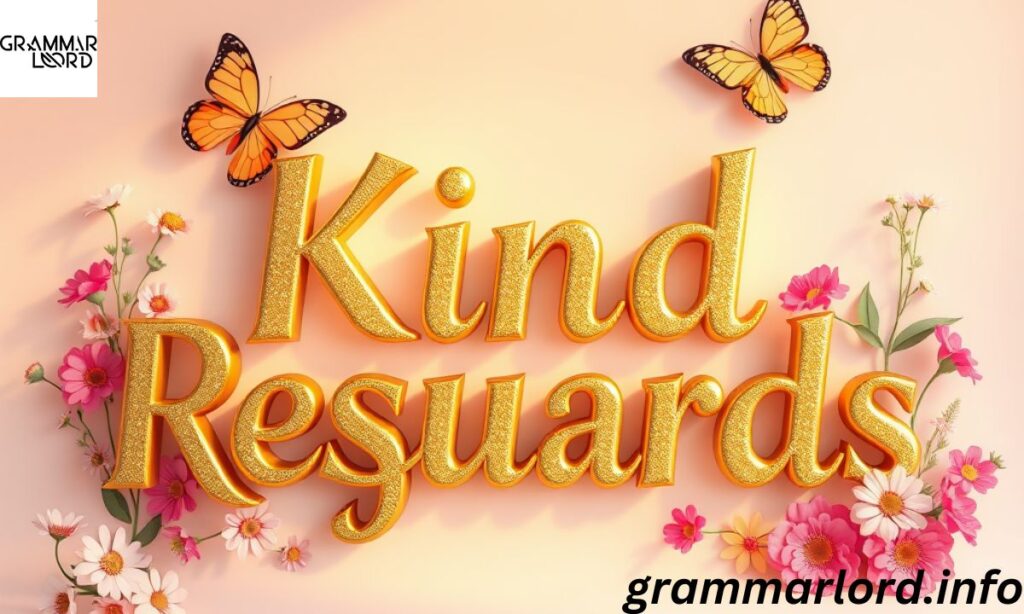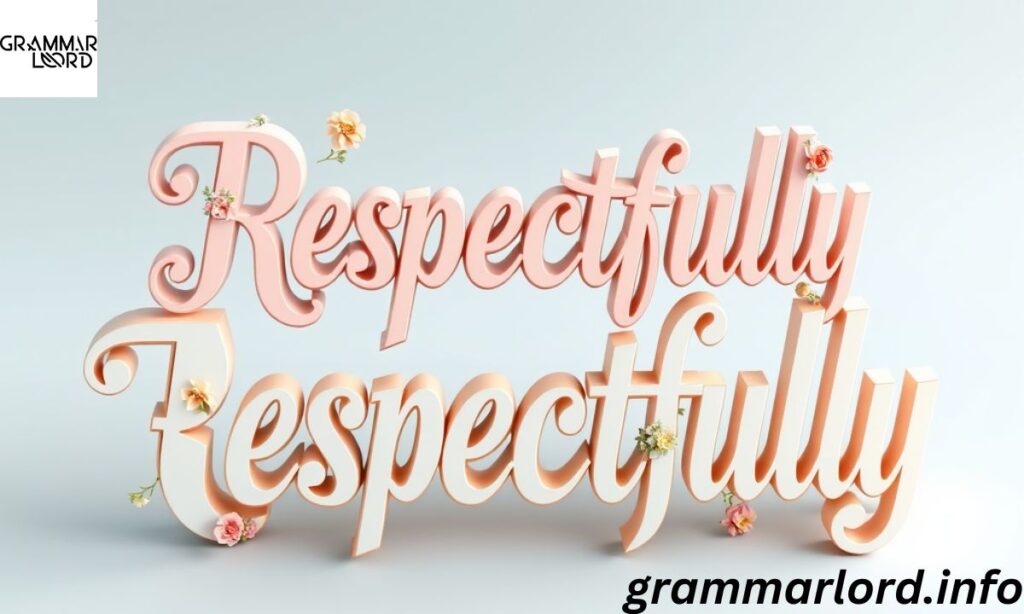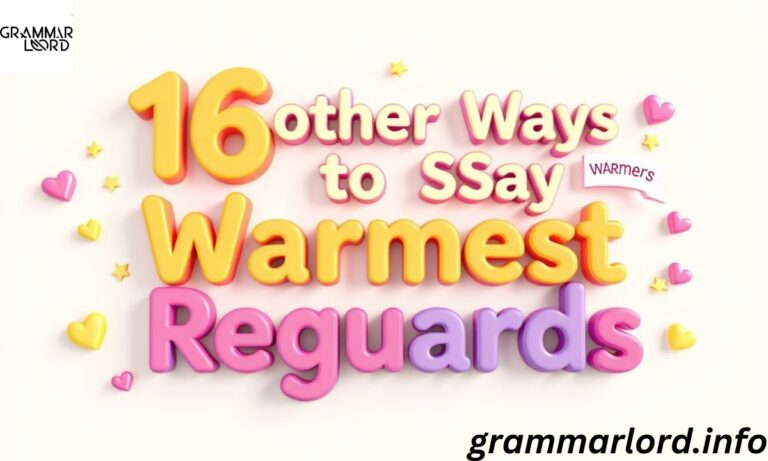When ending a message, choosing the right closing can set the right tone. Instead of “Warmest Regards,” there are many other ways to express warmth, professionalism, or sincerity. For example, formal options include “Sincerely,” “Yours Truly,” and “Respectfully.”
If you want a friendly touch, try “Best Wishes,” “Take Care,” or “Sending Good Vibes.” For a balance of warmth and professionalism, “Kind Regards,” “Best Regards,” and “Warm Regards” work well.
Main Points
- Importance of Closings – The right closing sets the tone of a message.
- Formal Closings – Examples: Sincerely, Yours Truly, Respectfully.
- Friendly Closings – Examples: Best Wishes, Take Care, Sending Good Vibes.
- Balanced Closings – Examples: Kind Regards, Best Regards, Warm Regards.
- Grateful Closings – Examples: With Appreciation, With Gratitude.
- Choosing the Right Closing – Depends on the relationship and message tone.
Best Wishes
“Best Wishes” is a warm and friendly closing suitable for both personal and professional messages. It conveys goodwill and positivity to the recipient. This phrase is often used in emails, letters, and greeting cards.
It works well for casual and semi-formal communication. Use it when you want to leave a positive and encouraging impression.
With Appreciation
This closing expresses gratitude and recognition for the recipient. It is a great choice when thanking someone for their time, effort, or support. It can be used in professional and personal settings.
It leaves a lasting impression of respect and acknowledgment. “With Appreciation” makes your message feel more heartfelt.
Regards
“Regards” is a simple and neutral closing that works well in professional communication. It is often used in business emails and formal letters. While it may not express deep emotion, it maintains a professional and polite tone.
It is best used when writing to colleagues, clients, or acquaintances. This phrase is a safe and effective way to end a message.
All the Best
“All the Best” is a warm and encouraging closing. It expresses goodwill and positive wishes for the recipient’s future. It is commonly used in both personal and professional communication.
This phrase is ideal for situations where you want to sound friendly yet professional. It works well when signing off an email or letter.
Kind Regards

This is a polite and professional closing that adds warmth to your message. It is commonly used in business emails and formal communication. “Kind Regards” shows respect while maintaining a friendly tone.
It is a great option when addressing colleagues, clients, or professional contacts. This phrase strikes the perfect balance between warmth and formality.
Sincerely
“Sincerely” is one of the most common formal closings. It is used in professional emails, letters, and applications. This phrase expresses honesty and sincerity in communication.
It is a great choice when writing to superiors, clients, or new contacts. “Sincerely” adds a professional and respectful touch to your message.
Yours Truly
“Yours Truly” is a formal and polite closing often used in professional letters. It is commonly seen in business and legal correspondence. This phrase conveys sincerity and respect.
It is best suited for formal writing, such as job applications or official letters. While traditional, it remains a widely accepted closing.
Best Regards
“Best Regards” is a professional yet friendly closing. It is frequently used in business emails and workplace communication. This phrase conveys a sense of respect and good intentions.
It works well when addressing colleagues, clients, or acquaintances. “Best Regards” keeps the message formal but not overly stiff.
Warm Regards
This closing adds a touch of warmth and friendliness to a message. It is suitable for both professional and personal communication. “Warm Regards” is ideal when you want to sound polite yet approachable.
It is commonly used when writing to business contacts with whom you have a good relationship. This phrase helps create a more personable connection.
Sending Good Vibes
This is a casual and uplifting way to end a message. It conveys positivity and warmth to the recipient. It is best used in friendly, informal communication.
This phrase works well in personal emails, texts, and social media messages. “Sending Good Vibes” helps create a lighthearted and cheerful tone.
Affectionately
“Affectionately” is a warm and loving closing used in personal communication. It is commonly used in letters or messages to close friends, family, or romantic partners.
This phrase expresses deep care and affection for the recipient. It is not suitable for professional or business settings. “Affectionately” makes a message feel more personal and heartfelt.
Take Care
“Take Care” is a kind and thoughtful closing. It is a great way to express concern for the recipient’s well-being. This phrase is commonly used in both casual and professional communication.
It is suitable for emails, letters, and even text messages. “Take Care” leaves a warm and caring impression.
Yours Sincerely
“Yours Sincerely” is a formal closing used in business and official letters. It conveys professionalism and respect. It is commonly used when addressing someone by name.
This phrase is often seen in job applications, legal documents, and formal correspondence. “Yours Sincerely” is a timeless and professional sign-off.
With Gratitude
This closing expresses appreciation and thankfulness. It is best used when writing to someone who has offered help, guidance, or support. It works well in professional and personal communication.
“With Gratitude” makes your message feel more heartfelt. This phrase helps to build a positive and respectful relationship.
Respectfully.

“Respectfully” is a formal and professional closing. It is often used in legal, government, and business communication. This phrase conveys high regard and deference to the recipient.
It is best suited for situations where you want to show respect, such as writing to superiors or officials. “Respectfully” ensures a polished and respectful sign-off.
Fondly
“Fondly” is a warm and affectionate closing. It is best used in personal communication with friends, family, or loved ones. This phrase conveys a sense of closeness and care. It is not typically used in formal or business settings. “Fondly” adds a heartfelt touch to your message.
Frequently Asked Questions
Which closing is best for professional emails?
“Kind Regards,” “Best Regards,” and “Sincerely” are great choices.
Can I use “Warm Regards” in a business email?
Yes, but it’s best for contacts you have a friendly relationship with.
What is a formal alternative to “Warmest Regards”?
“Respectfully” or “Yours Sincerely” are more formal options.
Is “Take Care” appropriate for work emails?
It can be used, but it’s more casual and best for friendly colleagues.
What closing should I use for a thank-you email?
“With Appreciation” or “With Gratitude” work well.
Conclusion
Choosing the right closing for your message depends on tone, audience, and context. Whether formal, friendly, or appreciative, your sign-off sets the final impression.
Professional settings may require “Sincerely” or “Best Regards,” while personal messages can use “Fondly” or “Take Care.”
Expressing gratitude? Use “With Appreciation” or “With Gratitude.” Selecting the right phrase ensures clarity, respect, and warmth in your communication.

